Review: The Legend of Zelda: Spirit Tracks
Announced for the first time at GDC 2009, The Legend of Zelda: Spirit Tracks became one of the few Zelda games to be announced and released in the same year. Featuring a graphical style similar to that of 2007’s Phantom Hourglass, Spirit Tracks showcased a new mode of transportation for Hyrule’s hero, a train. While the initial trailer for Spirit Tracks showed off quite a bit of gameplay, there were still many questions I had. Would Link still be able to travel on foot in the overworld? Will you be able to lay your own tracks in the world? Where did the tracks/train come from? Fast forward to today, and we have all our answers as I’ve spent many an hour in Link’s latest adventure. And believe me, this is one adventure you won’t want to miss!
Spirit Tracks takes place about 100 years after the events of Phantom Hourglass. The story begins as Link is studying to become a train engineer. Link finally gets his chance to be called an official engineer when he is invited to Hyrule Castle for the ceremony conducted by Princess Zelda. Zelda knows that Spirit Tracks all across Hyrule have been disappearing but feels the ceremony necessary. After the ceremony, Zelda gives Link a letter to meet her in her room. She informs Link about the disappearing Spirit Tracks and wants Link to take her to the Tower of Spirits which she believes holds the key to the Spirit Tracks’ disappearance. While en route, Chancellor Cole and a mysterious man named Byrne intercept your train. They break the Tower of Spirits into pieces and Cole uses magic to separate Zelda’s soul from her body. Zelda’s soul travels with Link where they retrieve the Spirit Flute from Zelda’s chamber and head back to the Tower of Spirits. There they find Anjean, a Lokomo (ancient tribe), who tells them that 100 years ago the Spirits of Good fought and imprisoned the evil king Malladus. The Spirit Tracks were created as shackles to hold the king and the Tower of Spirits is the key that locks the prison. Link must find a way to bring the Spirit Tracks back, stop Cole, and reunite Zelda’s soul with her body.
If you’ve played Phantom Hourglass, you’ll feel right at home in Spirit Tracks. All the stylus controls are in tact with some slight improvements as well. Obviously the big change is you’ll now traverse Hyrule using a train rather than your boat in Phantom Hourglass. While in the train, you can control the speed by moving a lever to different positions. You can go normal speed, faster speed, neutral, and reverse. You can also pull a rope which blows the horn (one of my favorite things to do) and use another lever that switches the tracks at intersections. It’s all done on the touch screen and is incredibly fun and intuitive. As far as comparing it to the boat travel in Phantom Hourglass, it’s like comparing apples and oranges. In both cases, you can map out where you want to go before you disembark. But in Spirit Tracks, you are given far greater control over your motion along the way. At any point you can switch directions, tracks, speed, or even stop to enjoy the sights.
Not all of the tracks are missing at the outset of the game. There are enough tracks for you to explore the main Hyrule field where the Castle is located. As you explore the world, you’ll find various Lokomos who are in charge of different temples/regions on the world map. Each Lokomo will teach you an ancient song to play using the Spirit Flute. When these songs are played with the Lokomo, Spirit Tracks are reborn and new paths are opened for Link/Zelda. And yes, Zelda is with you throughout the entire game and she plays a BIG part. Not only is she your guide, but she also helps you throughout each dungeon as she can inhabit the bodies of Phantoms. This allows you to send Zelda through environments that you normally couldn’t go to retrieve keys, unlock doors, or get special items. Also, puzzles are now a lot deeper since you’ll often have to coordinate your efforts with Zelda such as stepping on 2 switches, or climbing on her back to go through lava.
Like most Zelda games, progress is made by going to various dungeons/temples, finding a unique item, beating the dungeon boss, and unlocking a path to the next dungeon/temple. Spirit Tracks is no different. You’ll progress from dungeon to dungeon and solve various puzzles and get items to help you along your way. However, as I played through Spirit Tracks, there was a distinct feel to the game that differentiated it from all the other Zelda games. I’m not sure if it was the train aspect, or the more involving puzzles, but it felt more fun than ever before. I really felt like I was Link and the immersive puzzles done on the touch screen further enhanced that feeling. Phantom Hourglass definitely pioneered a lot of what you see in Spirit Tracks, but ST went above and beyond any of my expectations. Every puzzle is engaging, every boss battle is well thought out (and challenging), and the overall experience is pure fun. The game design in Spirit Tracks truly is remarkable and innovative in so many ways.
From a graphics/presentation perspective, Spirit Tracks shines as one of the best on the DS. From the detail in character animations to the full 3D world to the intricate dungeon/boss design, Spirit Tracks is a sight for sore eyes. And there is soooo much detail in the game. There are certain areas where you’ll get to see the ocean close up and it’s amazing to see all the attention to detail that we’ve come to love about Nintendo’s game developers. The world doesn’t feel ‘empty’ like some 3D worlds. The boss battles in particular really show off what the DS is capable of displaying. Phantom Hourglass had 3D bosses, but sometimes the perspective wasn’t quite right. Boss battles in Spirit Tracks are incredibly epic, and utilize both the touch screen and the 2 screens very well. I won’t spoil anything, but the boss battles in Spirit Tracks could be some of the best in the entire history of Zelda games (not even joking).
Multiplayer
The multiplayer mode in Spirit Tracks is very similar to the one in Phantom Hourglass with a couple new modes. You can still play with up to 4 people and there are different mini-games such as collecting the most triforce shards and new Phantom modes. It’s still quite a bit of fun and is easy to pick up and play on the go.
Conclusion
The Legend of Zelda: Spirit Tracks is one of the best Zelda games I’ve ever played, period. It has a great storyline with unique elements that differentiate it from all the others in the series. Having Princess Zelda along for the adventure is a welcome, new idea and helps to liven up the experience. All of the improvements in level design, a massive world to explore, tons of new items to collect, and great boss battles make Spirit Tracks a must-own for any Zelda fan craving a new adventure.
The Legend of Zelda: Spirit Tracks gets a 9.6/10

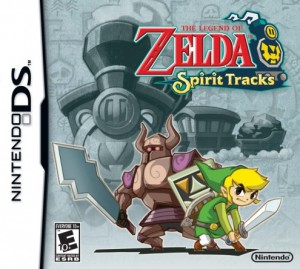
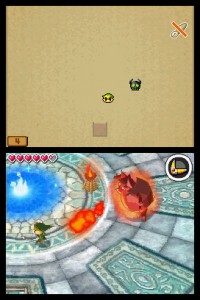
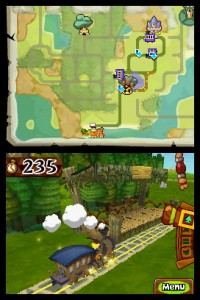
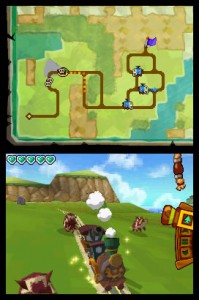
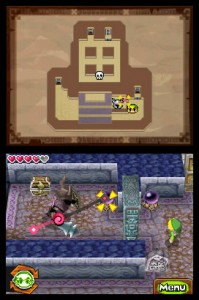
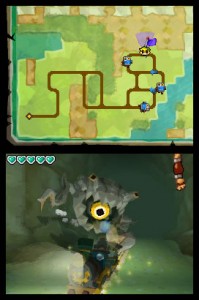
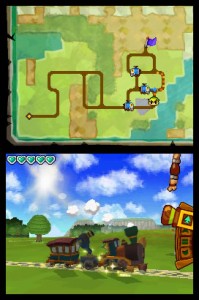
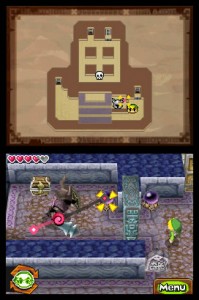


March 18, 2010
[…] Full review here addthis_pub = 'cortjezter'; addthis_hide_embed = false; addthis_options = 'delicious, digg, email, facebook, google, live, myspace, slashdot, stumbleupon, twitter'; Permalink […]
March 18, 2010
[…] Originally posted here: pure nintendo » Blog Archive » Review: The Legend of Zelda: Spirit … […]
March 18, 2010
[…] pure nintendo » Blog Archive » Review: The Legend of Zelda: Spirit … Spirit of False Creek 10 on Flickr – Photo Sharing!Hug For Haitian Goalie Shows U.S. Team's Spirit | KOSU RadioGoNintendo – The Legend of Zelda: Spirit Tracks – reviewZelda Gaming » It's the Puzzles that Make Spirit Tracks Special …The Legend of Zelda: Spirit Tracks (DS) | VideogameUK | Xbox 360 …Two Coats of Paint: The devil-may-care spiritThe Legend of Zelda: Spirit Tracks (DS) – E3 2009 Trailer …Zelda News » Spirit Tracks – Our Five Favorite Things – Zelda …Spirit of changeb_0001.wmv – Barack Obama VideosWhy Zelda: Spirit Tracks Deserves Your Attention // Siliconera View the Contact Powered by Type […]